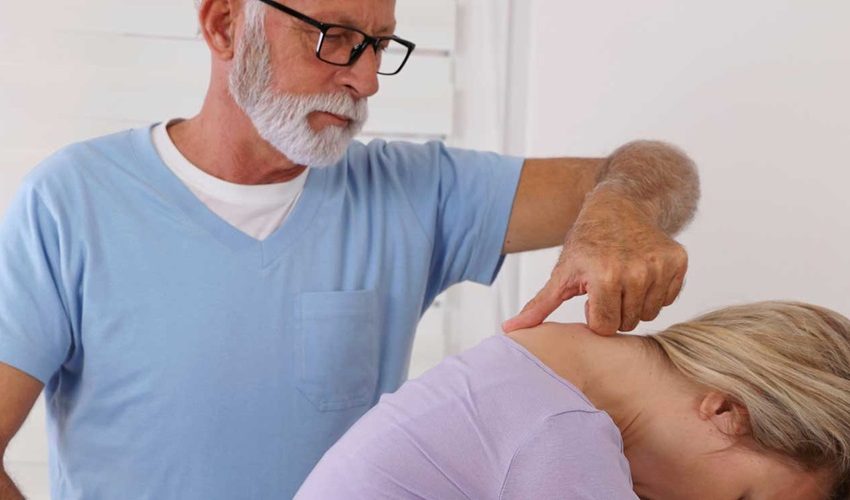Is kyphosis Treatable?

In the world of medicine, to have a normal body structure and functional body system will mean a person in good shape and can be considered healthy. However, abnormal structures such as hunchbacks or the back seem differently than others not only pose low self-esteem but also can cause other medical conditions when left untreated. If you watch or read about “The Hunchback of Notre Dame”, you would understand how difficult it can be to be living in that state and oftentimes be distressing. In this article, we will be learning about kyphosis and is it treatable?
Kyphosis is a spinal disorder that is characterised by the excessive curve of the spine. This results in the abnormal rounding of the upper back. Everyone does have some degree of curvature in the spine but a curve more than 45 degrees is considered excessive and abnormal. Although kyphosis often causes few symptoms other than the abnormally curved back and often not needing any treatment, at times it can also cause symptoms that could be problematic.
Kyphosis is often seen starting at the age of 40 years old and women tend to develop kyphosis rapidly compared to men especially when reaching menopause. It is estimated that 20 to 40% of adults above the age of 60 are affected by kyphosis. There are a number of reasons or causes leading to kyphosis. This includes poor posture (postural kyphosis) such as slouching and carrying heavy bags that increase the spinal curvature, abnormally shaped vertebrae (Scheuermann’s kyphosis), abnormal development of spine during pregnancy (congenital kyphosis) and spinal curvature increased with increasing age. Kyphosis may also be due to a spinal injury, osteoporosis, slipped disc, infections in spine and malignancies such as tumour in spine. The most common form of kyphosis is postural kyphosis. Scheuermann’s kyphosis is often more severe than postural kyphosis and it is not known what exactly causes this form of kyphosis. Congenital kyphosis often gets worse as a person ages.
Symptoms of kyphosis depend on the cause and the severity of the curve. Commonly, what can be seen in patients with kyphosis are rounded shoulders, visible hump on back, tight hamstring muscle and fatigue. Patients often complain of mild back pain. Spine stiffness and spine tenderness can be found. As time goes by, the progressive curve may lead to nerve issues such as weakness of legs, numbness or tingling sensation of lower limbs, loss of sensation of the lower body parts and changes in bowel or bladder habits. It may also cause breathing difficulties and eating problems.
Kyphosis can usually be diagnosed by examination of the spine and by x-ray imaging test. Examination of the spine can range from checking the balance and range of movement. Doctors will also determine if the curvature issues are mainly due to bad posture or structural problems. As simple as lying down, if the spine straightens, this could be postural kyphosis whereas if otherwise, it could be structural form of kyphosis. In some cases, blood test or lung functions test may be done to help evaluate the severity of the kyphosis. In case the curvature rapidly changes, doctors may ask for a neurologic test or MRI scan. Bone density scan may be recommended in case of kyphosis suspected of osteoporosis or other diseases that weaken the bones.
Is kyphosis treatable? Yes it does but treatment depends on the severity of the kyphosis. The goal of treatment is to stop the progression of the curve and to prevent deformity. In most cases, kyphosis does not require treatment. In case of postural kyphosis, correction of the posture will gradually fix this issue. In most cases, conservative management such as physical therapy, painkillers such as nonsteroidal anti-inflammatory drugs (NSAIDs) and periodic visits to doctors is enough. Kyphosis that is caused by osteoporosis will be treated with anti-bone resorptive medications or bone-building medications to prevent spinal fractures. Bracing is recommended for moderate kyphosis in adolescents to help guide the spine growth and straighten it. In structural types of kyphosis such as Scheuermann’s kyphosis or congenital kyphosis, surgery may be recommended. Spinal fusion is the most common surgical procedure done to treat kyphosis. Surgery known as kyphoplasty and vertebroplasty is offered for older patients with osteoporotic fractures.
It can be concluded that kyphosis may or may not cause any discomfort beside the image of the hunchback. However, it is best to get diagnosed early if there are symptoms of kyphosis even if there is no pain or any unusual sensation. Treatment of kyphosis depends on the person’s age, gender, severity of the curve and how flexible the curve can be. The only way to know if kyphosis needs to be treated with surgery or enough with conservative management is to get evaluated by doctors. Even though most young patients with kyphosis can be treated successfully without surgery and lead an active healthy life, the curve progression can be a problem when they reach adulthood. Thus, it is best to get checked by a doctor no matter how old or young the person with suecpected kyphosis is.